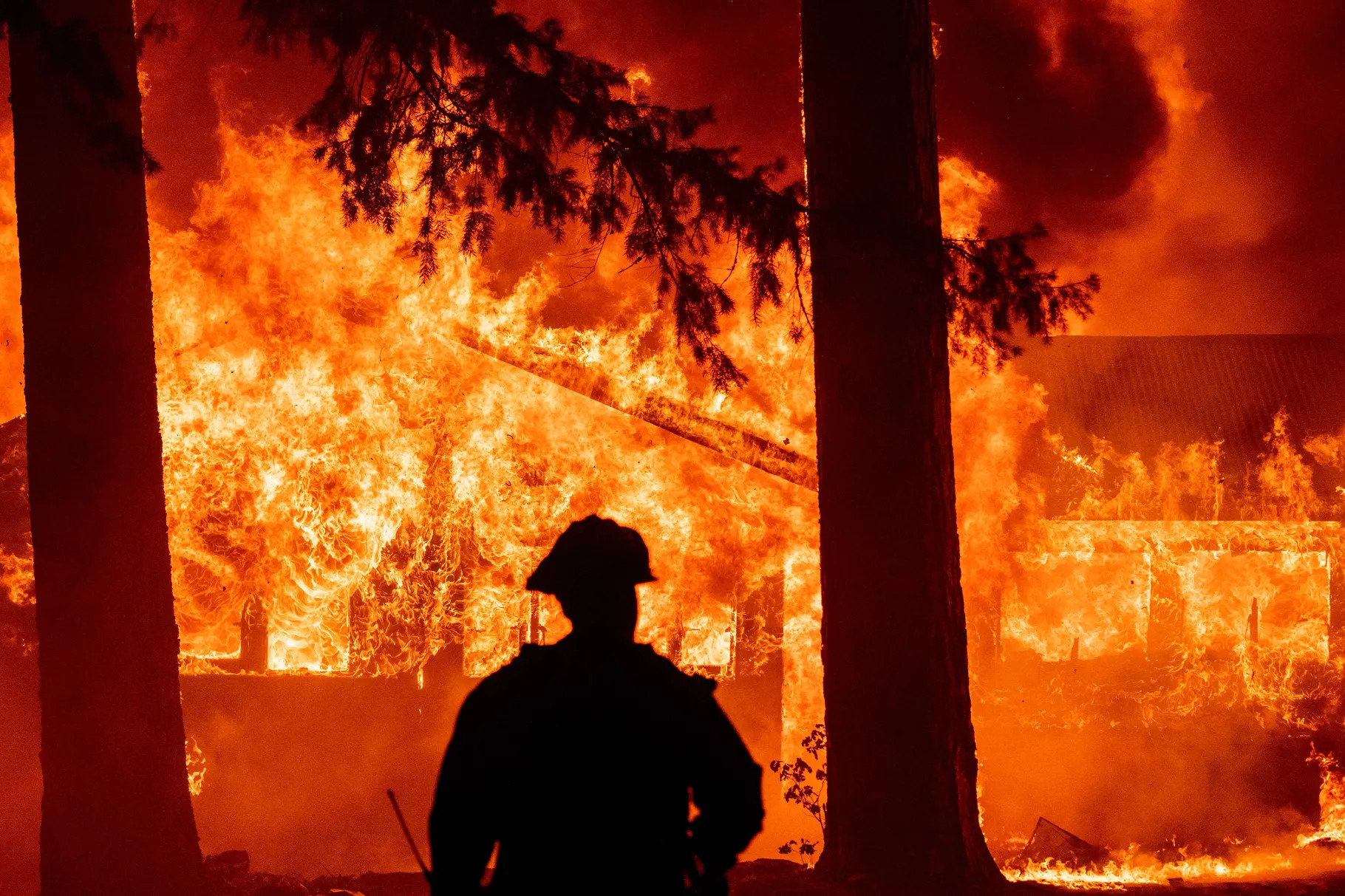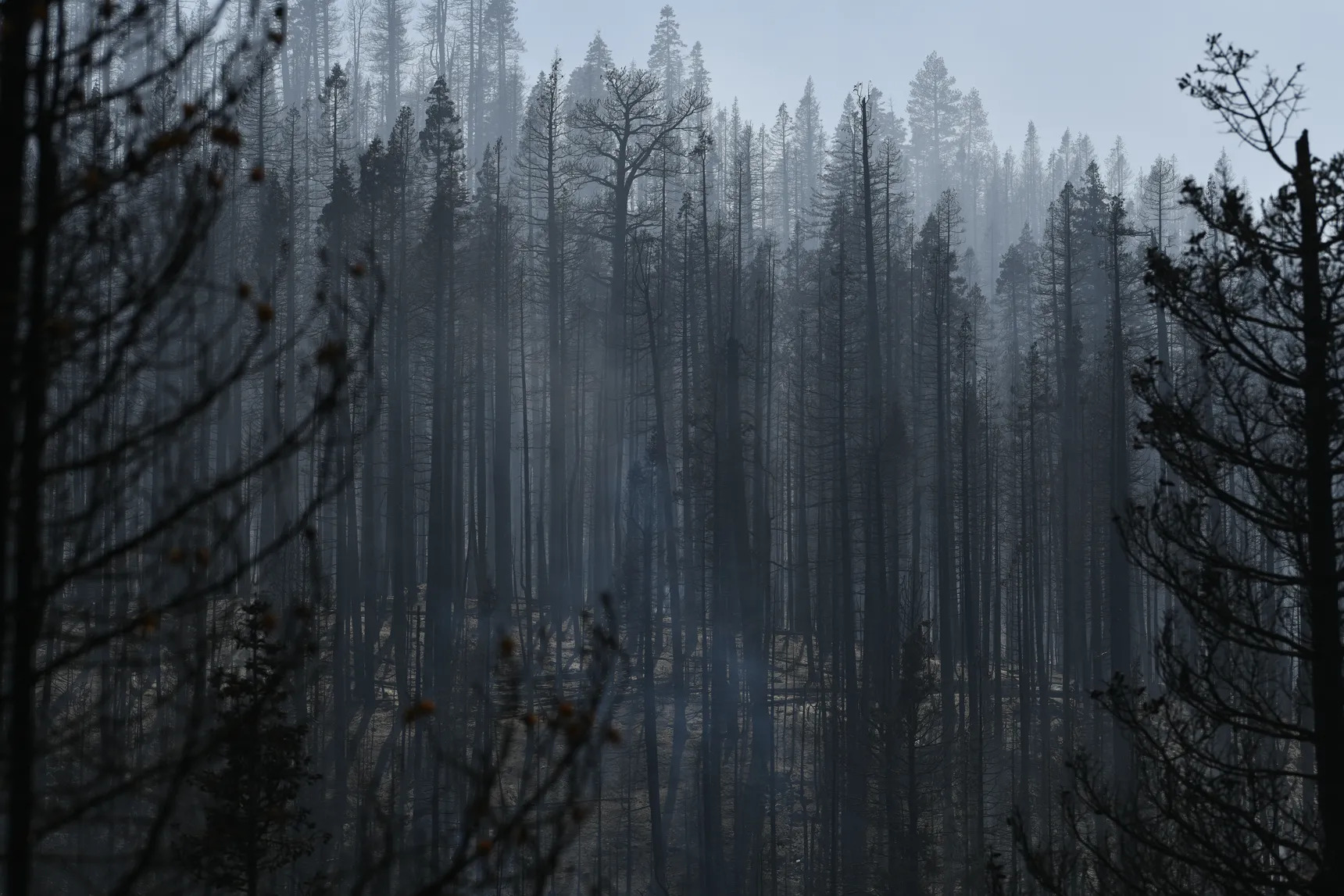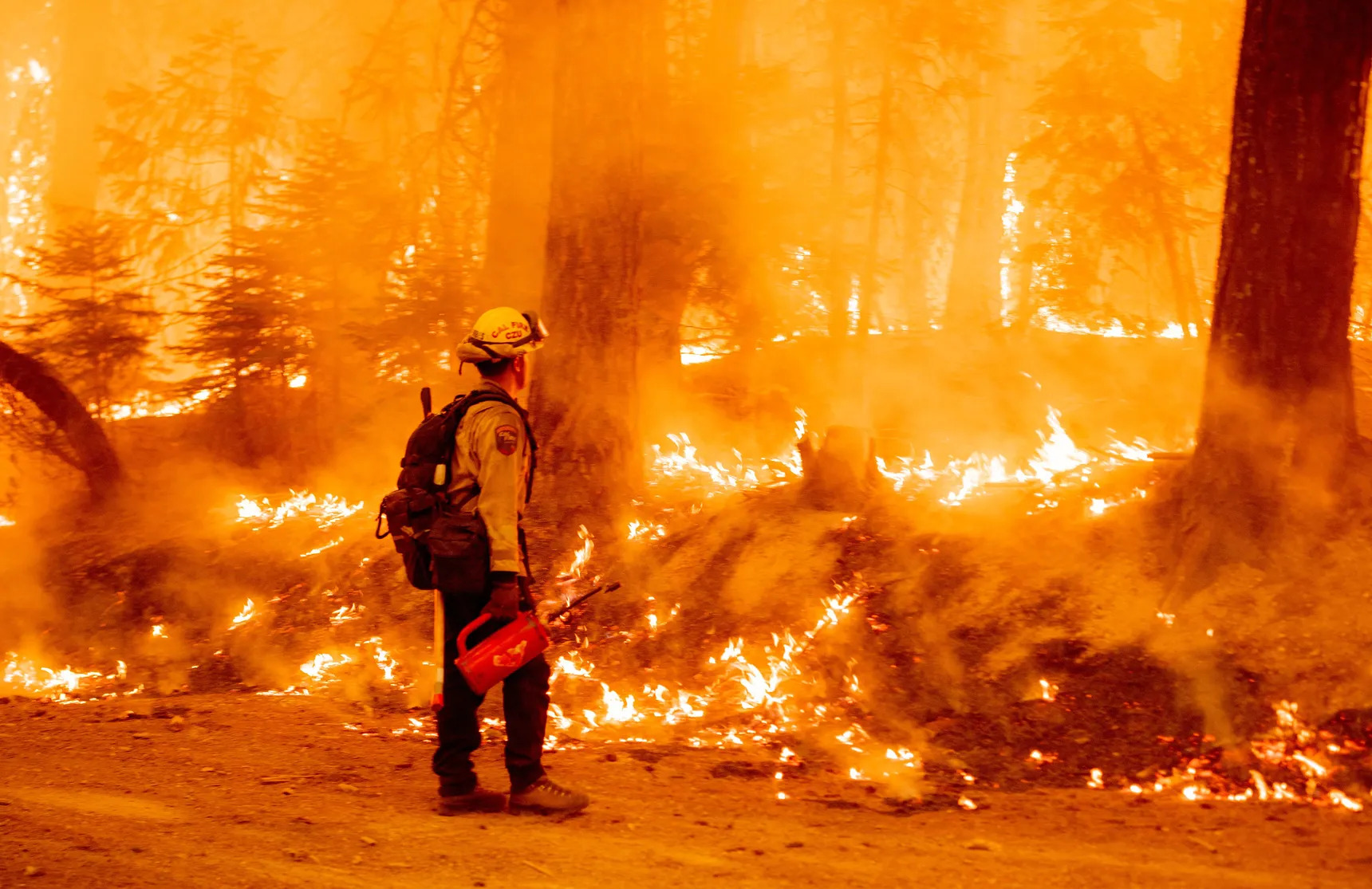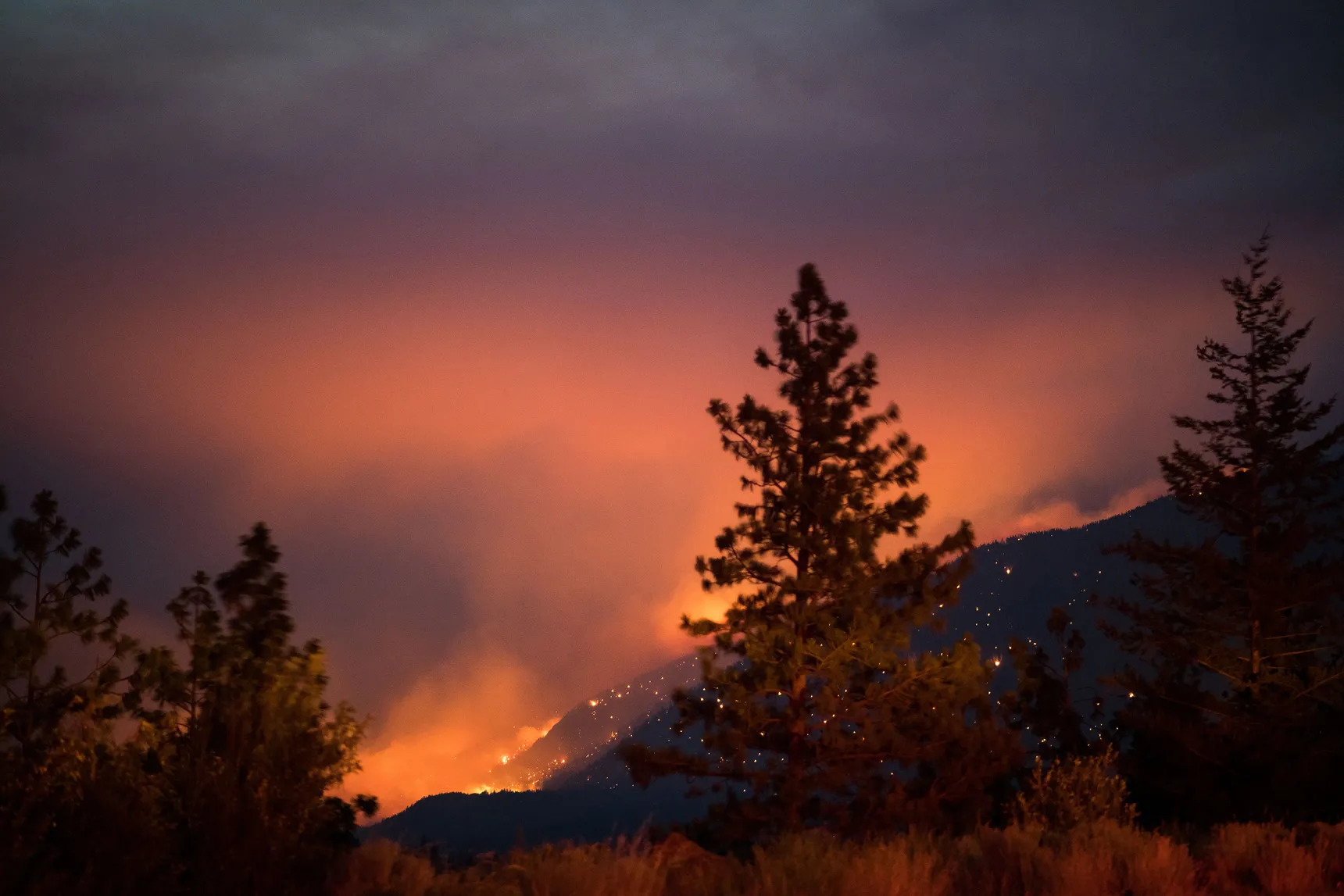
California’s largest active fire continues to burn Sunday after tearing through a small community overnight.
The Dixie Fire, which started earlier this month and has now burned more than 190,000 acres, forced a new wave of evacuations in Northern California on Saturday before striking the town of Indian Falls the same evening, destroying homes and vehicles.
According to Cal Fire, the blaze is still only 21 percent contained and “continues to display extreme fire behavior.”
It’s just one of several massive fires, supercharged by climate change and extreme drought conditions, that are currently burning across the American West, and it comes as other parts of the world confront their own climate disasters while US climate action hangs in balance in the Senate.
On Thursday, the Dixie Fire became the second fire to reach “megafire” status — burning at least 100,000 acres — in California this year. California’s Sugar Fire was the first to clear that threshold earlier this month, though it’s now 98 percent contained.
In October last year, the August Complex Fire became the first recorded “gigafire” in California history, burning more than 1 million acres.
Fire Capt. Eric Limones of @calfireSCU snapped this incredible photo of his crew at the #DixieFire this week. It speaks volumes about what these firefighters are up against as they battle the state's biggest blaze of the year.https://t.co/mk9tABjrOy pic.twitter.com/IHDFgD6pxy
— Hayley Smith (@whereishayley) July 24, 2021
California Gov. Gavin Newsom has declared a state of emergency for the affected counties in both the Sugar and Dixie Fires — as well as the Tamarack Fire, which is currently burning along the California-Nevada border near Lake Tahoe.
All told, according to the National Interagency Fire Center, at least 86 large fires in 12 states are currently burning in the United States, covering almost 1.5 million acres and casting an oppressive pall of smoke as far away as New York City.
More than 2.77 million acres have burned so far in 2021, about 800,000 more than at the same time last year but less than in 2019 and other previous years.
Of the fires currently burning, the largest by far is Oregon’s Bootleg Fire, a sprawling blaze that has burned nearly 409,000 acres as of Sunday and even began generating its own weather — high winds and lightning — last week.
“The fire is so large and generating so much energy and extreme heat that it’s changing the weather,” Marcus Kauffman, a spokesman for the Oregon Department of Forestry, told New York Times reporter Henry Fountain last week. “Normally the weather predicts what the fire will do. In this case, the fire is predicting what the weather will do.”

The Bootleg Fire, which was ignited by a lightning strike on July 6, is the third-largest in Oregon since 1900, according to CNN, as well as being the largest in the country this fire season. As things stand, it’s 46 percent contained — but hotter, drier weather is expected this week, according to Oregon Public Broadcasting.
“It is so dry out here on the ground that to be able to extinguish the fire completely, to be able to have what we call full containment of the fire, we are going to need Mother Nature’s help” in the form of a “season-ending weather event,” Katy O’Hara, a spokeswoman on the firefighting effort, told the Washington Post last week. According to the Post, such an event — a substantial rainfall or even snow — may not arrive in Oregon until “late fall” this year.

Like most of the West, drought conditions in California and Oregon have fueled the Bootleg and Dixie Fires, resulting in a fire season that is far worse than usual, far earlier.
According to the US Drought Monitor, major swaths of Washington, Oregon, California, Montana, Idaho, Nevada, Utah, Arizona, and New Mexico are all in the midst of a drought, as are other parts of the US.
More than 95 percent of that region is experiencing at least “moderate” drought conditions, according to a map produced by the US Drought Monitor, and about 65 percent is facing “extreme” conditions.
“This is more like what we would typically see in the late fall, at the end of the fire season before the rains come,” Capt. Mitch Matlow, the public information officer for the Dixie Fire, told the Los Angeles Times on Saturday. “The fuels got drier earlier in the season, which leads to more erratic fire behavior.”

As Vox’s Lili Pike reported in April, conditions this year aren’t exactly unexpected. A year plus of hot, dry weather and consecutive underwhelming rainy seasons laid the groundwork for the Dixie Fire long before it ignited in mid-July, and bigger-picture trends are also to blame.
Scientists say that [the current drought] is part of a megadrought — a decades-long dry spell, punctuated by severe droughts. This current megadrought began around 2000, and the majority of the land in the West has been at some level of drought ever since.
And this striking drought bears the fingerprints of climate change. Using tree ring data, a study published in Sciencein April 2020 found that“anthropogenic warming was critical for placing 2000–2018 on a trajectory consistent with the most severe past megadroughts,” and that megadrought has extended to today.
This fits in with a grim picture laid out by the latest National Climate Assessment, authored by 13 US federal agencies in 2018. Rising temperatures will increase the likelihood of megadroughts in the Southwest and make droughts more frequent and severe, according to the scientific literature cited.
The devastating effects of climate change have also manifested in other ways this year: In June and July, a series of scorching heat waves shattered all-time temperature records in the Pacific Northwest and British Columbia, killing hundreds and exacerbating existing drought conditions in the region.
In Portland, Oregon, a new record-high temperature was set three consecutive days in a row, finally landing at 116 degrees Fahrenheit on June 28. In Washington state, Dallesport, a small town near the Oregon border, reached 118 degrees, tying the state’s all-time temperature record. And in Lytton, British Columbia, the temperature hit a new Canadian record of 121 degrees — one day before a wildfire tore through the town, killing two and destroying most of the village.

The recent heat dome, which experts say would have been “virtually impossible” without climate change, has only contributed to existing drought conditions in the West, and the result has been an “unprecedented” fire season, Canadian firefighter Brady Highway told Vox’s Benji Jones in an interview this month.
Highway, a member of the Peter Ballantyne Cree Nation in Saskatchewan, Canada, has been a firefighter for 25 years and fought “around 250 wildland fires” in his career. This year, he says, fires are already “off the charts.”
“We’ve already surpassed the number of fires we’ve experienced in previous years in Canada. British Columbia just initiated a state of emergency, and I suspect Saskatchewan and Ontario will do the same in a couple of weeks,” Highway said. “When I first started fighting fires, there was a very defined fire season — mostly July and August. Now, these events are happening in early spring.”
As bad as the climate-fueled US fire season is, it’s just one item on a grim list of climate disasters currently battering the world. Siberia is also on fire, for one, and Germany is flooding. So are parts of Turkey. And China. And India. In Colorado, flooding this year has been made worse by wildfires last year. The list goes on.
I don’t think I fully grasped how severe the European floods were until looking for photos for this story. Absolutely shocking and widespread devastation https://t.co/e0ioXkvATy pic.twitter.com/bPr0pqs0zW
— Brian Kahn (@blkahn) July 16, 2021
Already, the flooding in Germany — which also hit neighboring Belgium and the Netherlands — has killed more than 200 people across western Europe, with more than 150 still unaccounted for.
The floods hit with little notice, according to the AP, wreaking havoc and doing billions of euros in damage. And it’s likely to get worse from here: Climate change means future floods could be far more frequent.
“The rainfall we’ve experienced across Europe over the past few days is extreme weather whose intensity is being strengthened by climate change — and will continue to strengthen further with more warming,” Friederike Otto, the associate director at the University of Oxford’s Environmental Change Institute, told Deutsche Welle.
It’s a similar story in China. Historic rainfall in the city of Zhengzhou, the capital of Henan province, saw more than 24 inches of rain fall in a single day, including about eight inches in one hour. More than a million people have been displaced, and at least 33 killed — including 12 people who drowned when subway cars in Zhengzhou flooded, according to the Washington Post.
Conditions in Siberia are also particularly bad, thanks to unusually warm weather and the driest summer in more than a century. Already, according to Guardian reporter Andrew Roth, some 3.7 million acres have burned, blanketing the region in oppressive smog.
“It’s a thick smoke, yellow,” Ivan Nikiforov, a volunteer firefighter from Yakutsk, Russia, told the Guardian. “I don’t know how the locals could stand it. It will probably have health effects for them in the future. People are both depressed and angry. This situation should not have been allowed to take place.”
As the toll of climate disasters in the US and elsewhere continues to mount, it’s getting more difficult even for skeptics to deny that climate change is an urgent, immediate crisis — an assessment that has long been the consensus view of climate experts with the UN and elsewhere. With the stakes clearly established, President Joe Biden and congressional Democrats are pushing for sweeping action to address the problem, but it’s still unclear how climate change legislation will fare in an upcoming budget reconciliation proposal.
Already, as Vox’s Rebecca Leber and Umair Irfan wrote last month, much of Biden’s climate agenda has been stripped out of the bipartisan infrastructure plan still in the works in the Senate, though some provisions remain.
A proposed $3.5 trillion reconciliation package, however, would do more. The bill — which, as proposed, would also cover everything from health care to immigration and a host of other issues — includes a clean electricity standard aimed at reducing emissions by 50 percent over the next nine years, according to E&E News, as well as new clean energy and vehicle tax credits, money for a Civilian Climate Corps, and a clean energy accelerator program.
As Leah Stokes and Sam Ricketts wrote for Vox in February, “clean electricity standards are proven, practical, and popular” — and potentially transformational:
Clean electricity is the backbone of the energy transition — the critical piece that all the other sectors will slot into. Not only will getting to 100 percent clean electricity directly cut more than a quarter of US carbon pollution, it will also enable large parts of our transportation, building, and industrial sectors to run on clean power. Powering as much of these sectors as we can with carbon-free electricity would allow us to cut US emissions 70 to 80 percent. It would, in short, solve a huge chunk of our climate challenge.
Democrats have committed to advance the reconciliation package alongside the bipartisan infrastructure bill as part of a two-track strategy to keep both bills moving ahead of the chamber’s August recess, which is bearing down.
But while reconciliation bills only require a simple majority to pass the Senate, unlike most other legislation — which is subject to the 60-vote threshold imposed by the filibuster — the current set of climate provisions could run into trouble with Sen. Joe Manchin (D-WV), a frequent holdout in the Senate Democratic caucus.
Earlier this month, Manchin, whose home state of West Virginia produces more coal than any state in the US other than Wyoming, told CNN’s Manu Raju that he was “concerned” about the climate portion of the bill.
“Because if they’re eliminating fossils, and I’m finding out there’s a lot of language in places they’re eliminating fossils, which is very, very disturbing, because if you’re sticking your head in the sand, and saying that fossil (fuel) has to be eliminated in America, and they want to get rid of it, and thinking that’s going to clean up the global climate, it won’t clean it up all,” he said. “If anything, it would be worse.”
As David Roberts, former Vox writer and current author of the Substack newsletter Volts, explained last month, that’s pretty much nonsense.
Manchin & the rest of the dimwits trying to save fossil fuels need to be asked one question about climate policy, over and over again: how will your proposals get us on track to hit our emissions goals? There's an objective metric here. https://t.co/OKDlOIAMpG pic.twitter.com/0btMTbPOPt
— David Roberts (@drvolts) July 22, 2021
However, as things stand, Democrats still need Manchin’s vote to get anything done — and so, after a week where wildfire smoke from the West Coast blanketed Washington, DC, thousands of miles away, it’s unclear exactly which climate provisions will make the cut in the Senate.